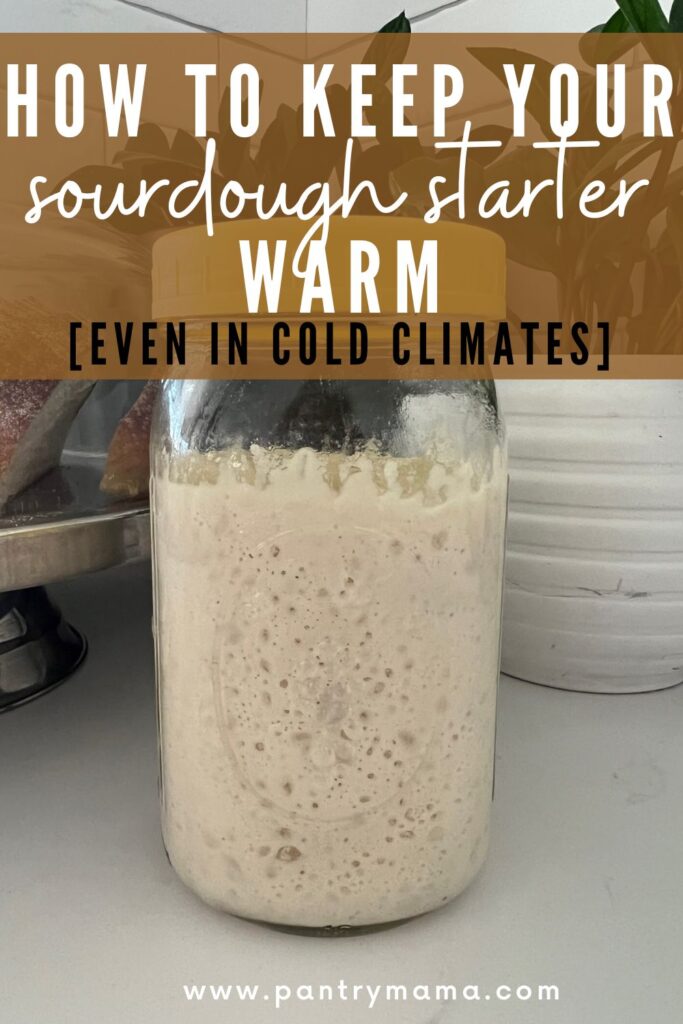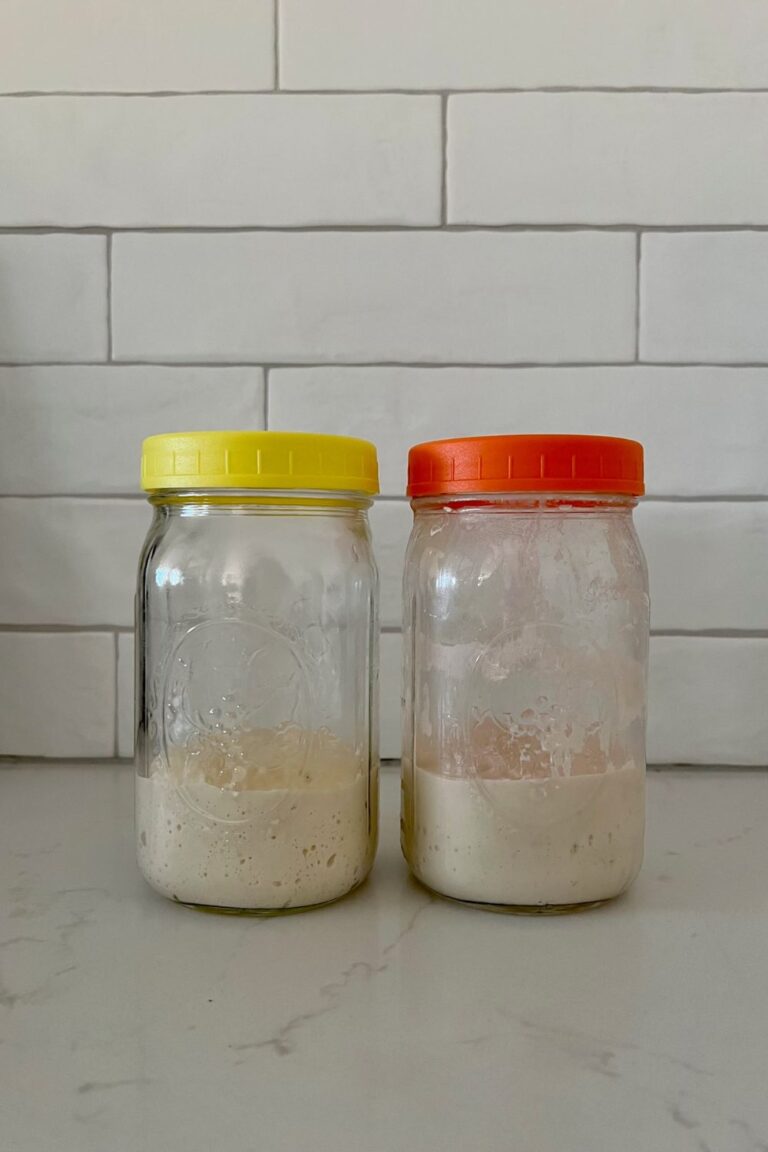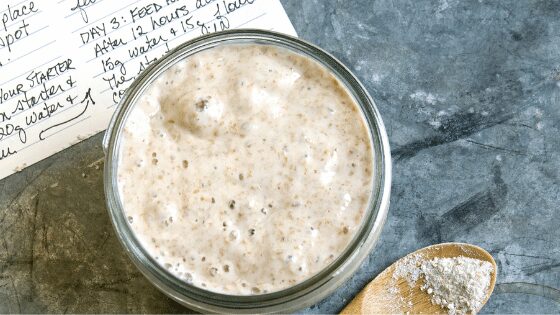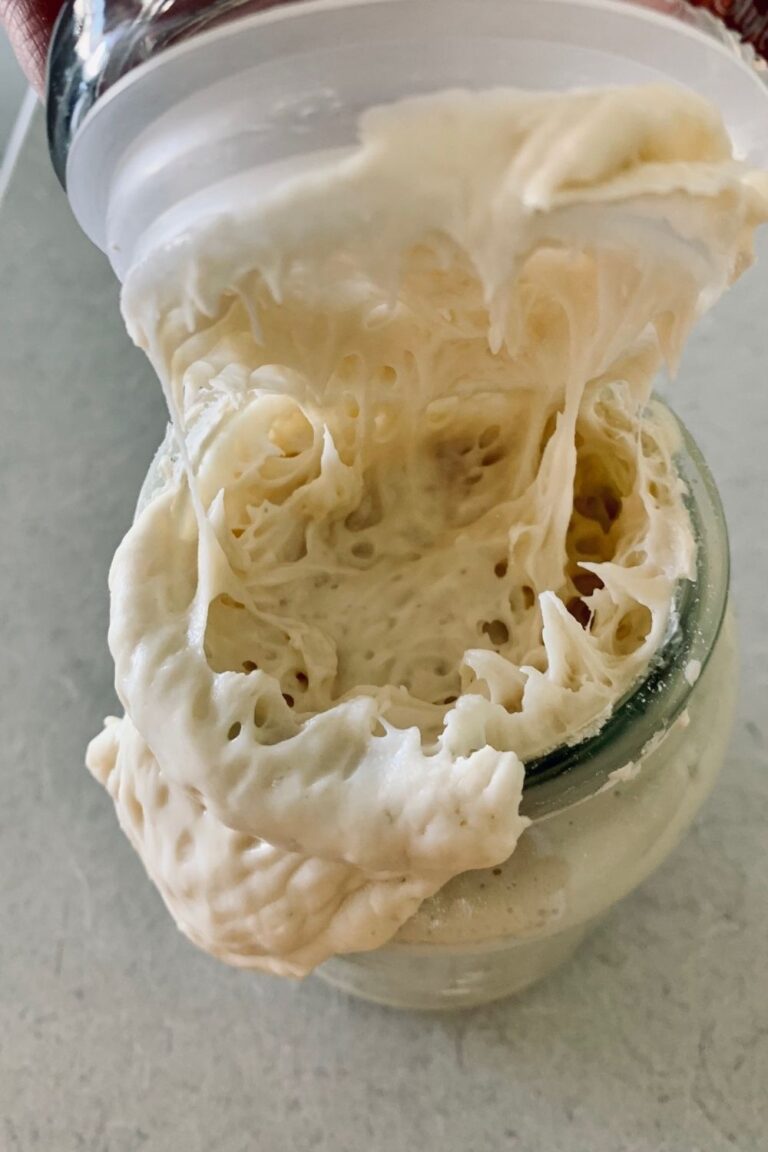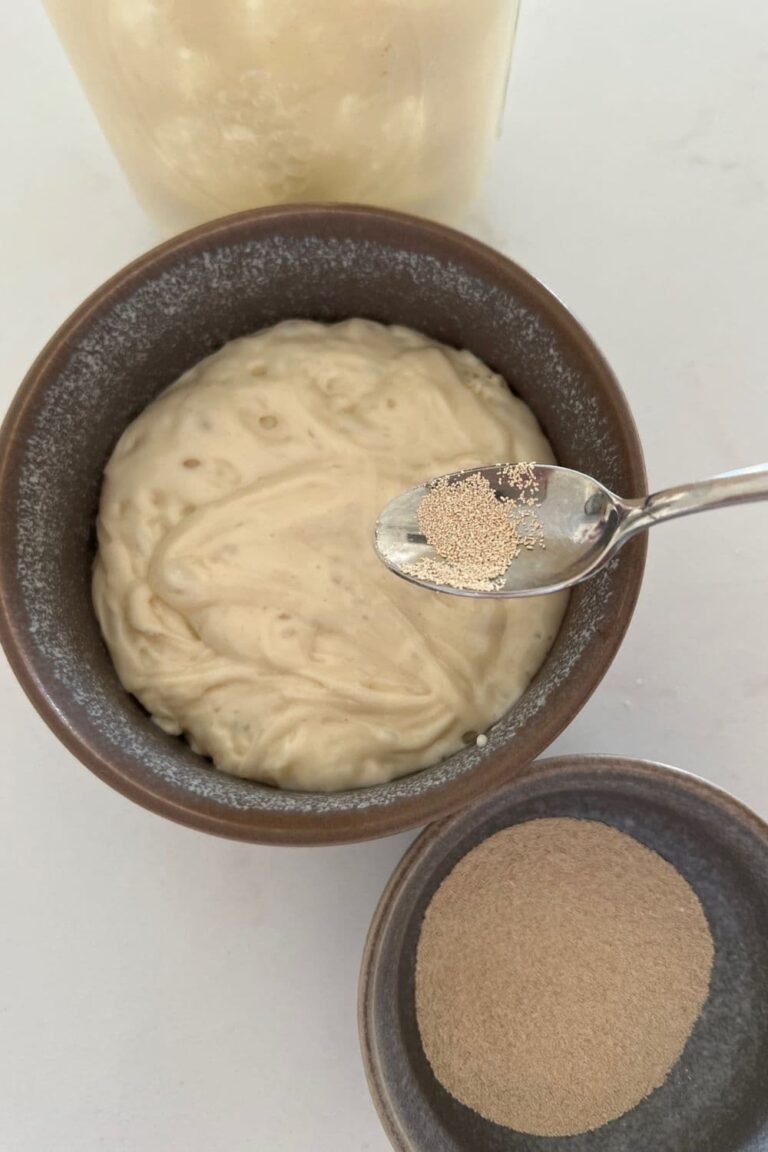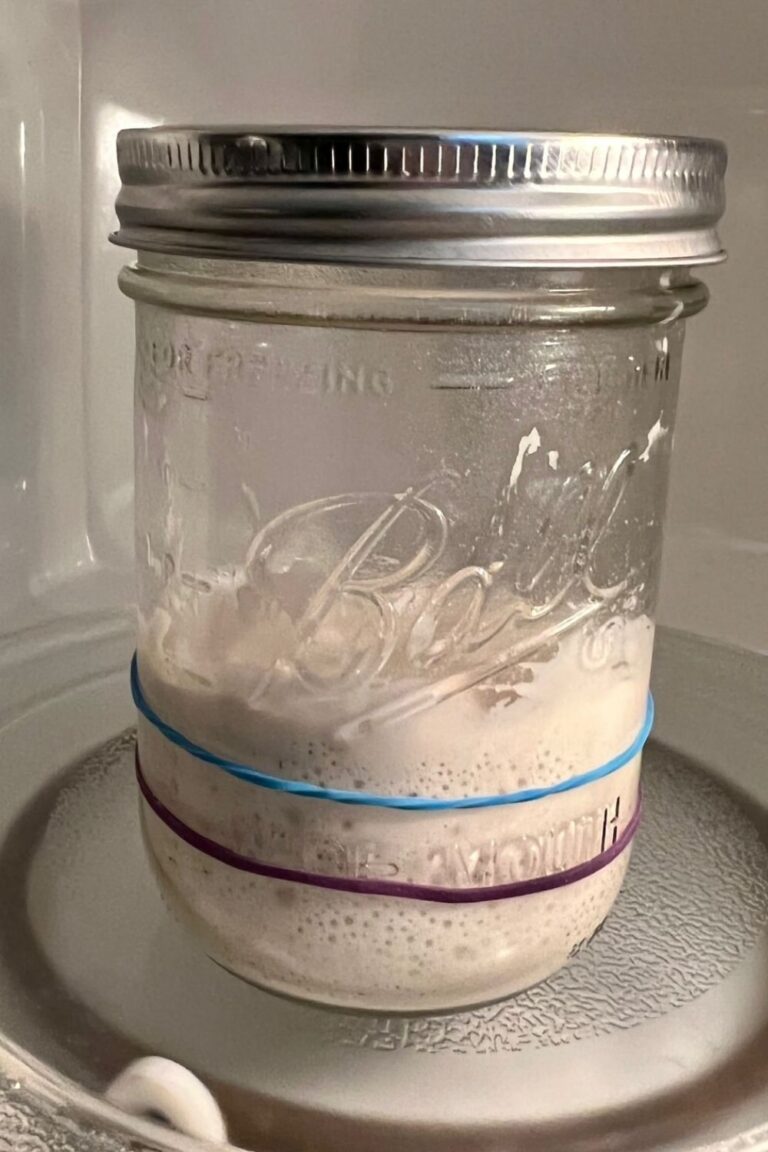How To Keep Sourdough Starter Warm
This post may contain affiliate links.
Keeping your sourdough starter warm can make a huge difference to the quality of both your starter and the sourdough bread you bake.
In fact, temperature can be the difference between a sourdough starter that rises and one that doesn't. Ideally you want to keep your sourdough starter warm, so that it functions in any weather, even the depths of winter (because everyone loves winter sourdough recipes)!
This posts shares lots of different methods for keeping your sourdough starter warm and thriving, even in a cold climate.
Some of the most popular and efficient ways to keep an active sourdough starter warm include:
- Feeding starter with warm water
- Using a seed raising mat
- Using a yoghurt maker or instant pot
- Keeping it in your microwave or oven with the light turned on
- Using a warm water bath or thermos
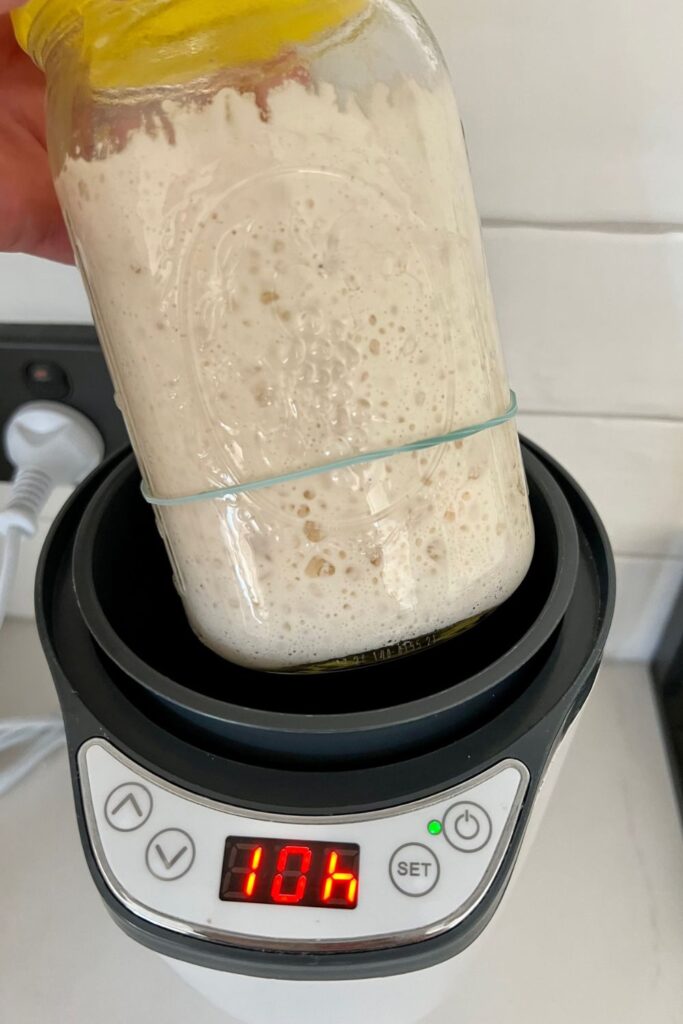
Warm Sourdough Produces Better Sourdough Bread
The wild yeast contained in your sourdough starter are not as reliable as those found in a commercial yeast packet and thus they can need a more stable, warm environment to flourish.
Given that what is happening in your sourdough starter jar is a prediction of what will happen to your sourdough loaf, you really want to keep those wild sourdough starter yeast as happy and warm as possible.
Depending on the season you're baking in, the ambient temperature in your home may not be the ideal temperature for your sourdough starter to thrive. This article will show you the best way to keep your sourdough starter warm and doubling consistently. A healthy starter will give you better bread, every single time.
You can find detailed information on making your own sourdough starter here and how a sourdough starter works here, as well as all my fave discard sourdough recipes here. If you're looking for the best methods for baking sourdough bread in colder temperatures, you this guide to baking sourdough bread in hotter and colder temperatures will be useful.
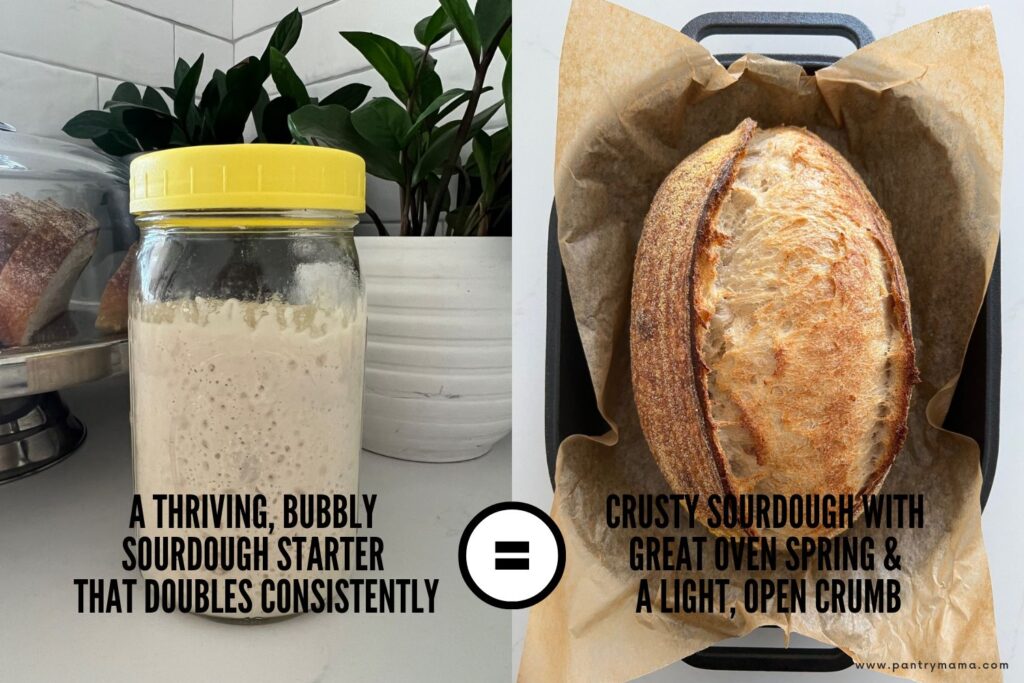
Why Does A Sourdough Starter Need Warmth?
Sourdough starter requires a warm ambient temperature to ensure that the wild yeast stay active and the fermentation process occurs. Sourdough yeast will hibernate and become inactive if the ambient temperature is too cold. This means your sourdough starter will not rise and double and thus your sourdough loaves will also be flat and dense.
A sourdough starter requires a warm ambient temperature rather than direct heat. Direct heat will cause your sourdough starter to cook and eventually kill the sourdough starter.
It doesn't matter whether you're using all purpose flour, bread flour or even whole wheat flour or rye flour to make your sourdough starter, the temperature is of utmost importance. Using different flours can also help to strengthen your sourdough starter, but as a general rule, the right temperature has more of an effect than the type of flour.
What is the Ideal Temperature for Sourdough Starter
For the healthiest sourdough starter, you want to keep it in an ambient temperature between 24C and 28C or 75F to 82F.
Temperatures outside of this range won't necessarily kill your sourdough starter, but they can result in a sourdough starter that is under or over active (like when you put your sourdough starter in the fridge or you freeze your starter).
And remember, the health and activity of your sourdough starter directly affects the quality of the bread you bake from it.
How To Measure Temperature Of Sourdough Starter
If you are having issues with your sourdough starter, or just because you're curious, it can be a beneficial exercise to measure the internal temp of your sourdough starter.
There are several ways to do this including:
- using stick on thermometer strips on the side of your jar.
- using a probe thermometer to measure internal temperature.
- using a jar with a built in thermometer
20 Ways To Keep Your Sourdough Starter Warm
Now we know that keeping our sourdough starter warm is so important, it's time to understand how we can do this on a daily basis.
In the summer time, your starter might be happy just sitting on the kitchen counter, providing you don't have the air con on too high. But in the winter, it might just need some extra help.
With 20 suggestions for keeping your sourdough starter warm below, you're sure to find a method that works for you.
Many of the following methods for creating warmer temperatures can also be applied to sourdough bread dough or even pizza dough to encourage optimal fermentation and rise.
Oven with light on
Keeping your sourdough starter in the oven can be fraught with danger because it's an easy way to cook it if you (or someone else) turns the oven on without realising your starter is in there. However, if you can ensure this doesn't happen, keeping your sourdough starter in the oven with just the light on can create a warm, stable environment for your starter to thrive.
This trick is perhaps better with older ovens that have a light bulb. I have just put in two new ovens and I cannot have the oven light on unless the oven is actually "on". The light goes off automatically when the door is closed.
Check the other settings on your oven. You may have a proofing setting (which is possibly too warm but worth checking. My oven has a "defrost" setting which sits at 30C (86F) according to my oven thermometer, but is actually around 28C (82F) which is perfect for my sourdough starter.
You can easily check the temperature of your oven using an oven thermometer.
Use these instructions to resurrect your sourdough starter if it does get cooked accidentally.
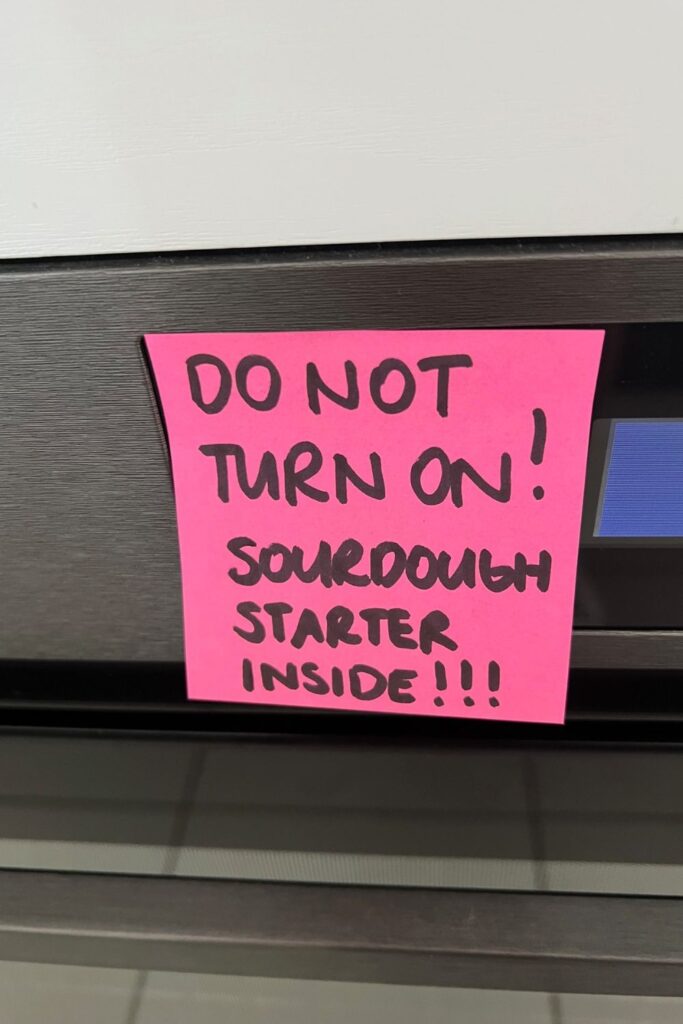
Warm Water
If your sourdough starter needs some extra warmth, simply feeding it with warm water and sitting it in some warm water can help to increase its overall temperature.
Feeding your starter with warm water (around 37C to 40C or 99F to 104F) is enough to give the wild yeast and good bacteria in your starter jar a helping hand.
Additionally, a water bath can be helpful too. I usually just run hot water from the tap (where the water temperature is around 50C (122F). Now this might seem too warm, but by the time it's actually in a bowl, it won't be that hot and then placing the jar of sourdough starter in it will reduce the temperature further so that it's just "warm". You will need to keep changing the water out if you use this method though, as it loses heat quickly.
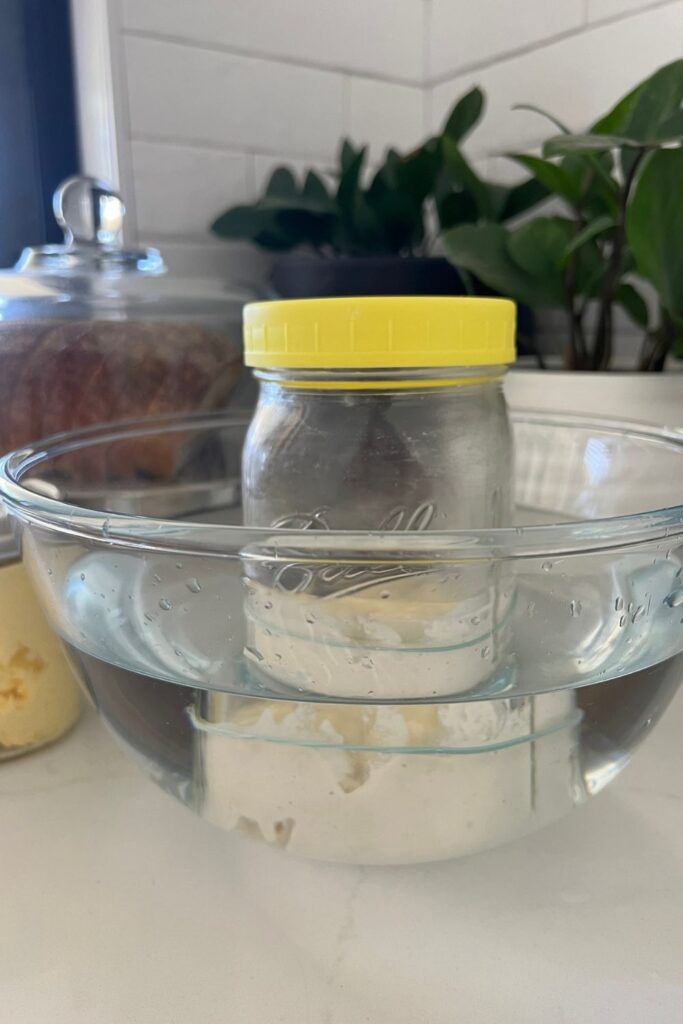
You could also use a Thermos to keep your sourdough starter warm. Do not use boiling water, again just hot water from the tap is sufficient. The Thermos will maintain the temperature for longer than just a bowl of water would.
Seed Raising Mat
These can be really handy to keep your sourdough starter warm in the winter. They're cheap and easy to get and don't take up a lot of space. You can purchase a seed raising mat from Amazon.
Heating Pad
Similar to a seed raising mat, these heating mats have been purpose built to keep dough and sourdough starters warm. They are often labelled as suitable for kombucha and home brew, but they are also suitable for keeping a sourdough starter warm.
Yogurt Maker
This is one of the easiest ways to keep your sourdough starter warm. I love using my yogurt maker for my sourdough starter because it gives me good temperature control, keeps it out of direct sunlight and also has a timer.
My sourdough starter grows exponentially when kept in this yogurt maker. It's actually suitable for lots of different fermentation applications.
This yogurt maker was purchased in Australia, but you can buy this similar one on Amazon for a reasonable price.
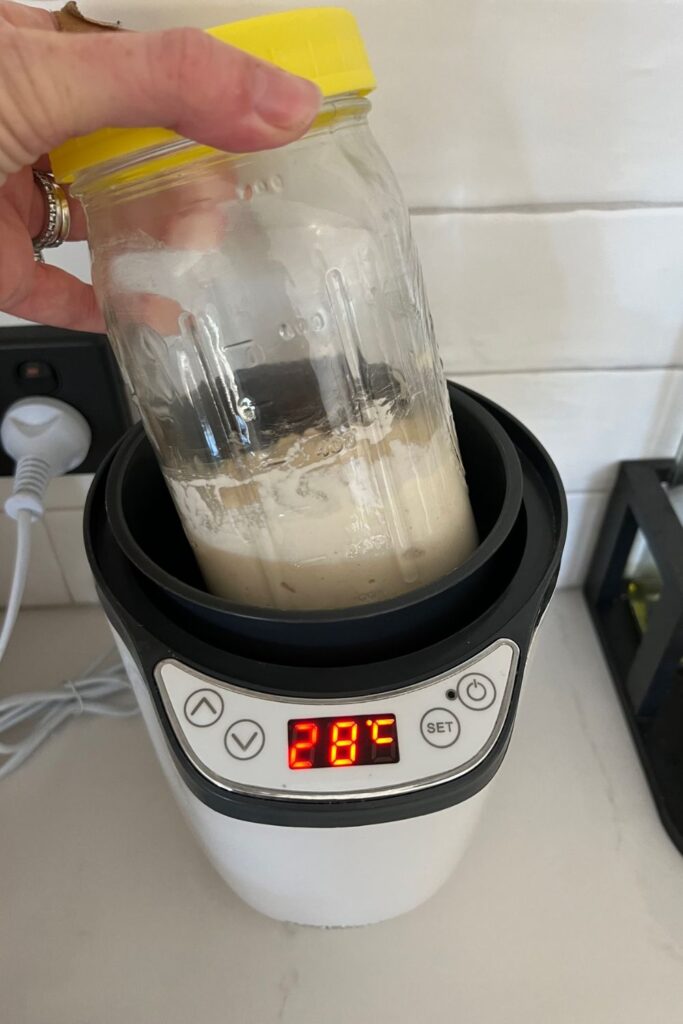
Instant Pot
Using the yoghurt setting on your Instant Pot can be a great way to keep your starter warm. It works similar to the yogurt maker mentioned above.
Proofing Box
If you can afford it, a purpose built dough proofing box is a fantastic way to keep your sourdough starter warm. You can keep your sourdough starter happy alongside your dough in a controllable micro environment.
DIY Proofing Box
If purchasing a proofing box is out of your budget, you can also create a DIY proofing box using things you might already have at home.
Up High
Hot air rises, which means that generally the ambient temperature will be warmer towards the ceiling of your home. Keeping your sourdough starter up higher can help to keep it warm. Think of places like the top of the fridge, above the tv, a shelf with a little space. They are all great, warm spots to keep your sourdough starter happy.
Cupboard or Draw Next to Oven
Depending on the layout of your kitchen, a draw or cupboard next to your oven can be a good option, especially if you use your oven a lot as the draws and cupboards surrounding it will be warm from the residual heat.
Microwave
Using your microwave to keep your sourdough starter warm is really easy. Most of the time, you can just pop your sourdough starter jar in the microwave and then leave the door ajar to keep the light on. This should generate enough warmth to maintain an active sourdough starter. However, if your sourdough starter doesn't rise in the microwave, adding a mug of hot water or a warm wheat pack is also a good idea.
Sunny Window Sill
A sunny window sill can be a great pace to keep your starter, however you will want to cover the jar or wrap it in a sock to ensure your sourdough starter is not exposed to direct sunlight. A happy starter prefers a warm, dark place.
Insulate with a Tea Cosy or Sock
Giving your sourdough starter jar a bit of insulation can work wonders in cooler temperatures. An old fashioned tea cosy or even a woollen sock can work. If you're a crocheter (or know someone who is) you could even make your own "sourdough starter cosy" to keep your yeasties warm.
Next to the Kettle
If you love a cup of tea and boil your kettle regularly, keeping your sourdough starter next to the kettle can generate enough warmth to keep it happy.
In the Car
Depending on where you live, popping your sourdough starter in your car can help to keep it warm. A word of warning though - cars can get warmer than you think, especially if they're parked in the sun. And another little reminder, make sure you put your sourdough starter in something to catch an overflow or ensure the jar is big enough to take the rise - the last thing you want is sourdough starter on your car upholstery!
Crock Pot or Slow Cooker
If you are really struggling to find a warm spot for your sourdough starter, placing the jar inside your slow cooker can work well. Instead of turning it on, I recommend placing a mug of boiling water in the crock along with your jar and placing the lid on.
The mug of water will create a warm environment for your starter to double.
I don't recommend actually turning your slow cooker on with your sourdough starter inside as it could accidentally cook your starter (especially if you have a cheaper slow cooker that doesn't regulate temperature well).
Kombucha Jar Band
Just like sourdough starter, kombucha requires a warm environment to ferment. These Kombucha Heating Bands can be used equally as well for sourdough starter and don't take up extra room like a pad or box.
Heat Packs
If you have a wheat pack or heat pack used for sports injuries or tired muscles, these can be handy to increase the temperature of your sourdough starter and get those wild yeasts moving!
Airing Cupboard
Depending on where you live, an airing cupboard may be an option for keeping your sourdough starter warm, even in cooler temperatures. These are more popular in English homes, than in America, but if you have one, they are a great option!
Fermentation Crock
This might sound strange, but when you think about creating a micro environment to keep your sourdough starter warm, using a fermentation crock is a great idea!
I discovered this when I was tidying up my kitchen counter and I placed my sourdough starter jar inside my empty sauerkraut crock. The small, dark environment kept my starter warm and it rose really well!
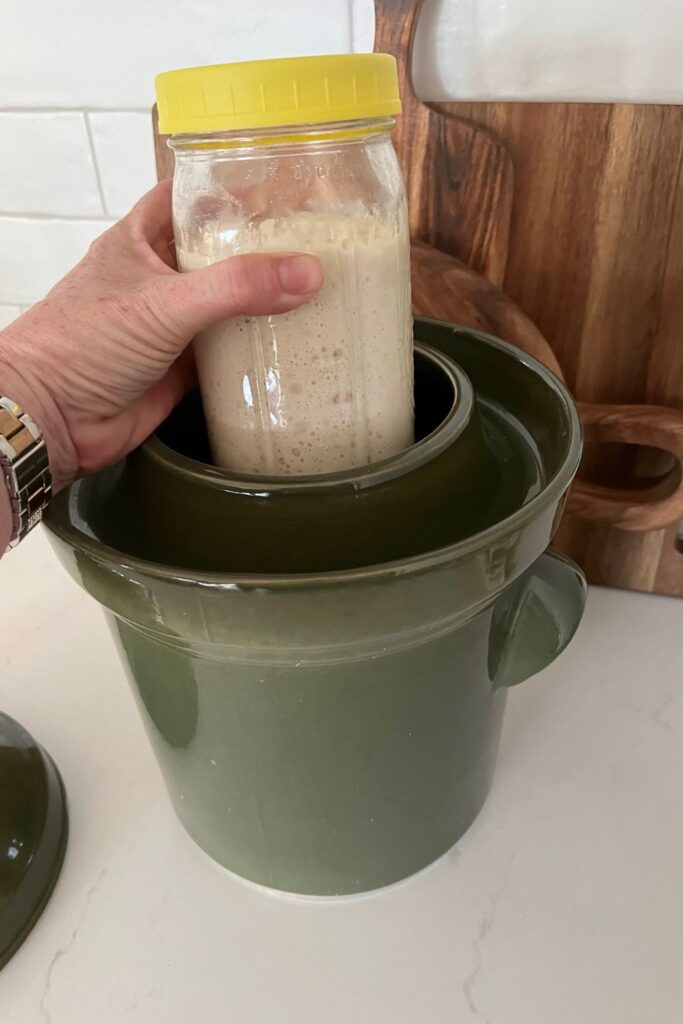
What Temperature Kills Sourdough Starter?
Yeast will die if exposed to temps of 60C or above (140F). It is very likely that your sourdough starter will actually die at temps lower than this. Anything above 120F (50C) would be considered too hot for a sourdough starter and will kill the wild yeast if exposed for long periods.
Many sourdough starters meet an untimely end by being kept in the oven when it is turned on without removing the sourdough starter. Sometimes, your starter will be salvageable, but not always.
There are actually very few ways to kill a sourdough starter, they are so resiliant!
How Long Can I Leave Sourdough Starter at Room Temperature?
As long as you're feeding your sourdough starter, it should survive at room temperature indefinitely.
A younger sourdough starter will need to be fed more regularly than a mature sourdough starter when left at room temperature. A mature sourdough starter may survive at room temp without being fed for several days. A new starter requires twice daily feeding or it will more than likely go moldy.
Regardless of the age or maturity of your culture, regular feeding is essential for a healthy sourdough starter.
Frequently Asked Questions
If the top of your starter turns yellow, it can indicate that the starter is drying out on top or that it's being kept too warm and starting to cook on the outside (the middle should still be ok). Make sure that your starter is covered using plastic wrap or a loose fitting lid and avoid warming it via direct heat.
It is better to keep your sourdough starter out of direct sunlight. While the warmth of a sunny window sill will certainly enhance the growth of the wild yeast and bacteria, the direct sunlight can do more harm than good.
Well it depends on what too warm is. If you keep your sourdough starter in temperatures above 30C but still below 50C, it will consume the starches in the flour more quickly, causing it to peak and then deflate much faster than if you kept it below 28C. Keeping your starter at temperatures above 30C may mean you have to feed it more often, which ultimately creates more work for you and costs more in flour.
